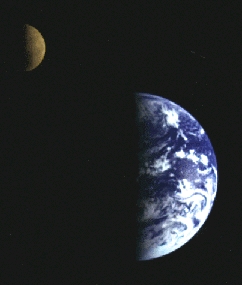The Earth with its moon, as seen from space.
Click on image for full size
NASA.
The Moon's Orbit and Rotation
The Earth's Moon is the fifth largest in the whole solar system, and
is bigger than the planet Pluto. The Moon has a nearly circular orbit
(
e=0.05) which is tilted about 5° to the
plane of the Earth's orbit. Its average distance from the Earth is
384,400 km. The combination of the Moon's size and its distance from
the Earth causes the Moon to appear the same size in the sky as the
Sun, which is one reason we can have total solar eclipses.
It takes the Moon 27.322 days to go around the Earth once. Because of
this motion, the Moon appears to move about 13° against the stars
each day, or about one-half degree per hour. If you watch the Moon
over the course of several hours one night, you will notice that its
position among the stars will change by a few degrees. The changing
position of the Moon with respect to the Sun leads to lunar phases.
Have you ever heard the term the 'far-side' of the Moon? Because of
the effect on the Moon of tidal
forces due to the Earth, the same side of the moon always faces
the Earth. In other words, it takes the Moon the same amount of time
to rotate around once as it does for the Moon to go around the
Earth once. Therefore, Earth-bound observers can never see the
'far-side' of the Moon. Tidal forces cause many of the moons of our
solar system to have this type of orbit.
You might also be interested in:
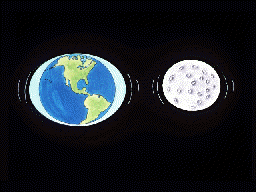
The force of gravity caused by an object gets weaker as you move farther away from that object. In this picture, the Earth is pulling on the Moon, and the Moon is pulling on the Earth. The Moon pulls more
...more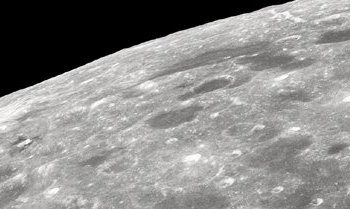
What phase was the Moon in on December, 22 1962? How long does it take the Moon to travel from one phase to the next? Suppose that the Moon spun twice on its axis during each orbit around the Earth. How
...more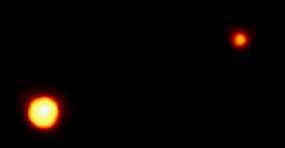
Charon is a moon of Pluto. Pluto has // Call the moon count function defined in the document head print_moon_count('pluto'); moons. Charon is much larger than Pluto's other moons. James Christy discovered
...more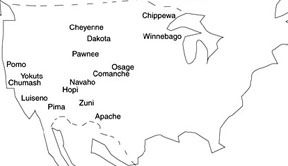
People from Asia crossed the Bering Strait into North America. These people were first in this new land and so they are known as Native Americans. Over time, these people broke into tribes (as seen on
...more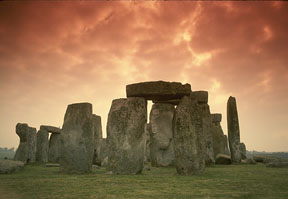
"The movements of the heavenly bodies are an admirable thing, well known and manifest to all peoples. There are no people, no matter how barbaric and primitive, that do not raise up their eyes, take note,
...more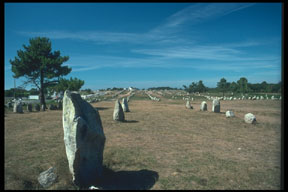
The stones of Carnac, France, are probably the most famous stones markings outside of those found at Stonehenge in England. There are many, many stones at Carnac. And these stones are very old too, the
...more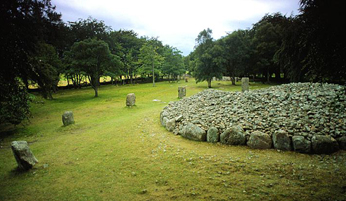
Not too far from Loch Ness, there lies three giant tombs made of stones. They are called the Balnuaran of Clava. The Balnuaran of Clava, giant tombs encased in stone, can be found close to Inverness in
...more


